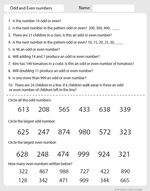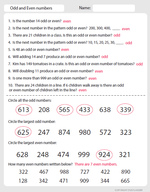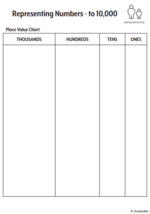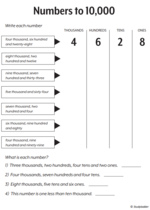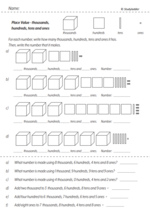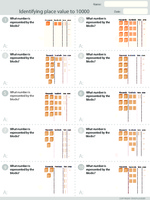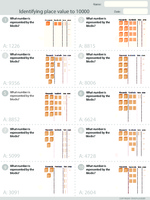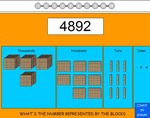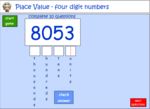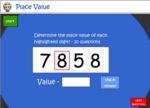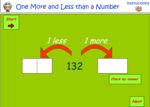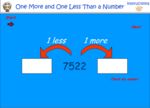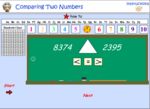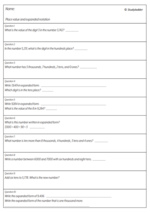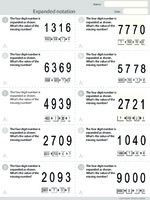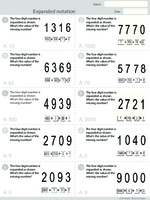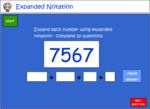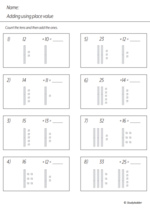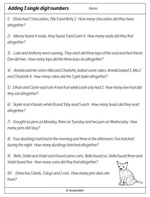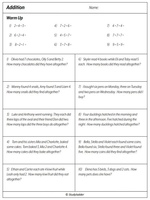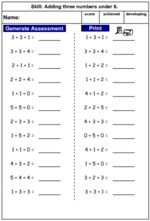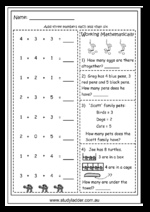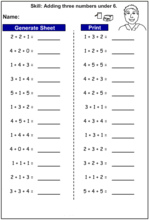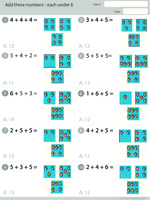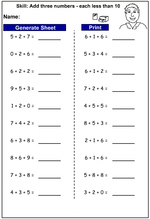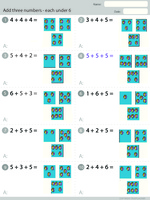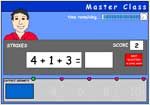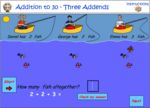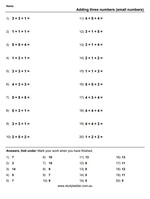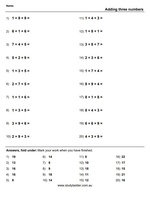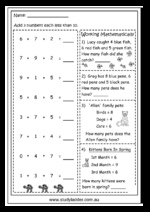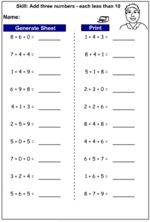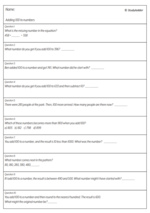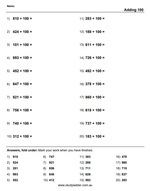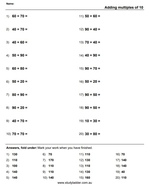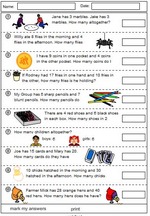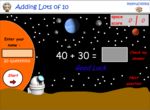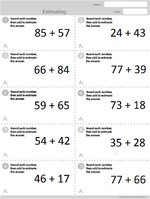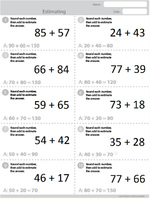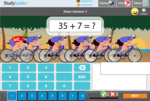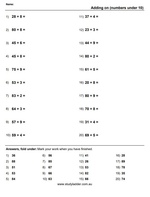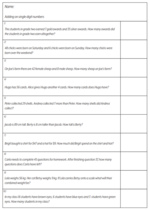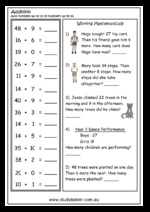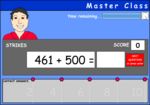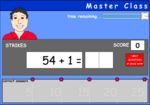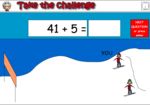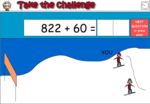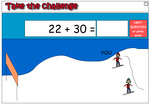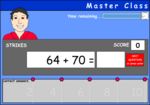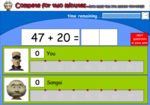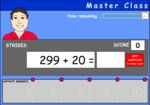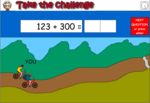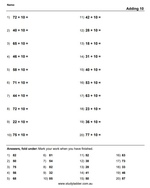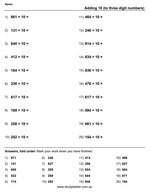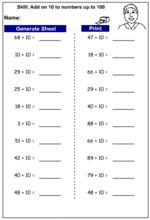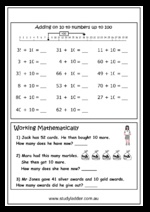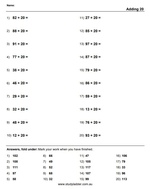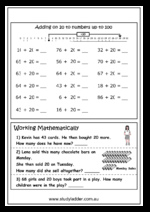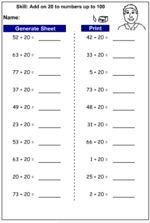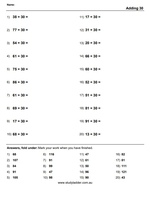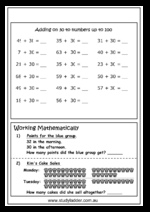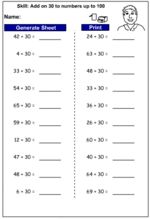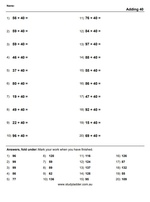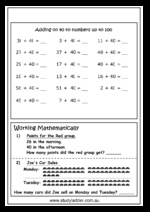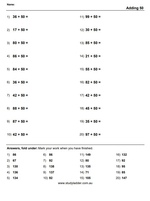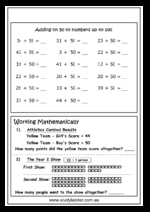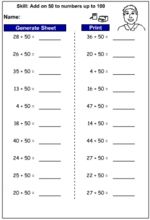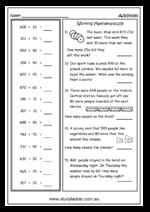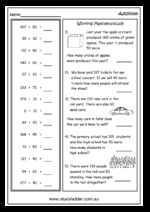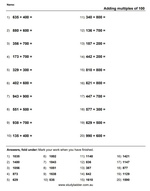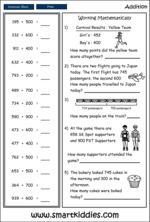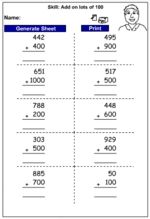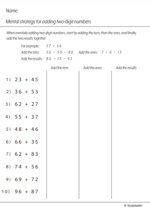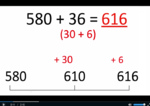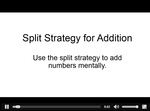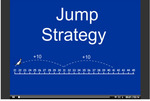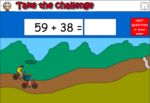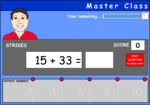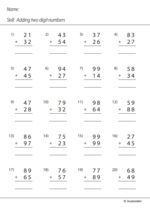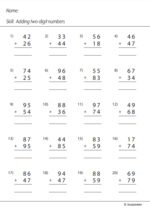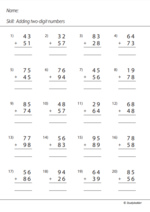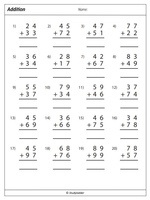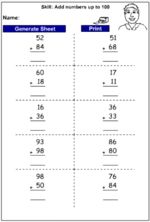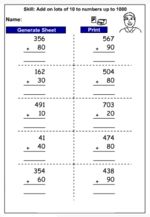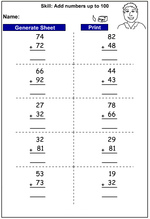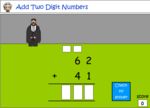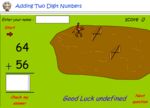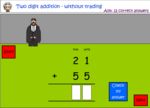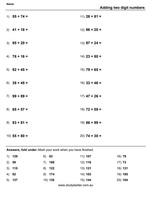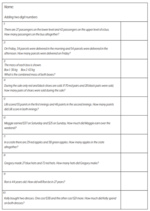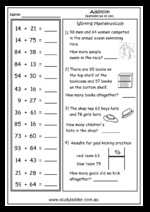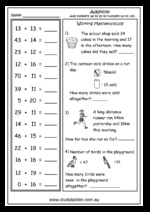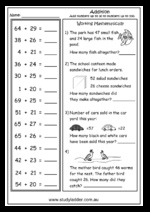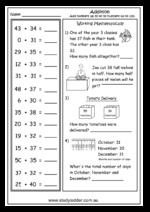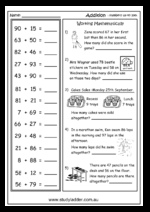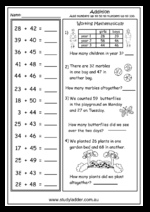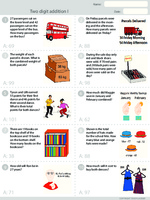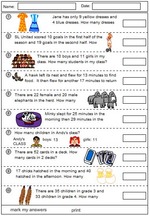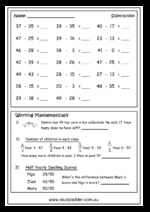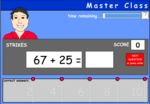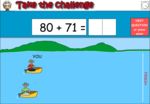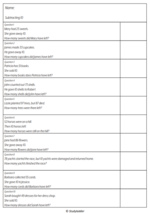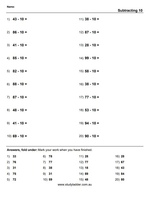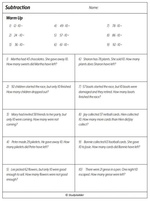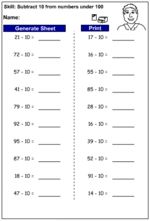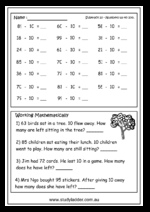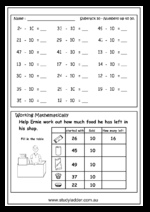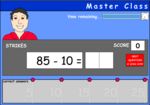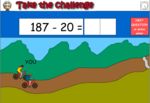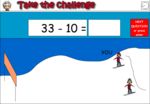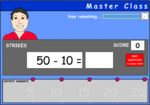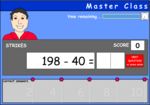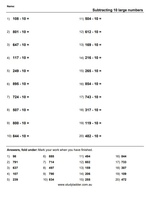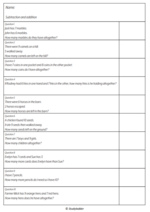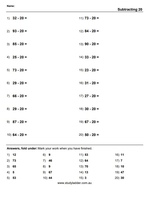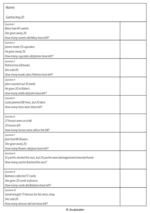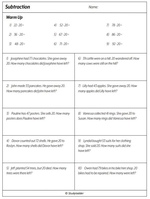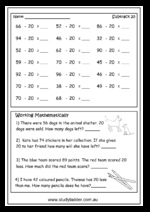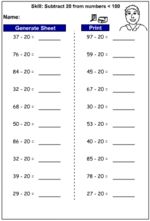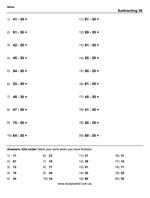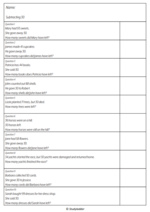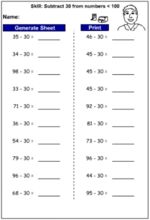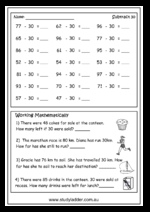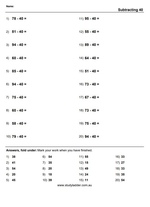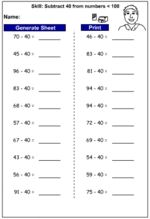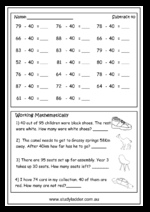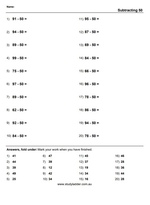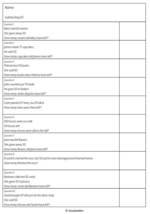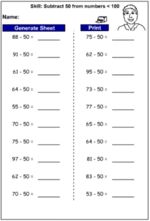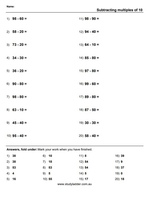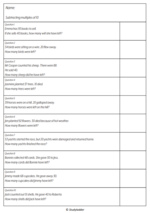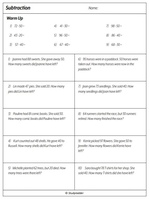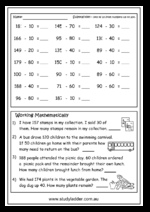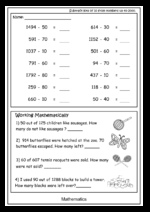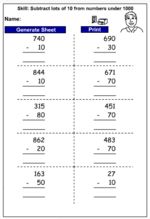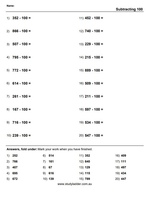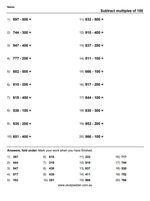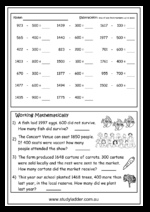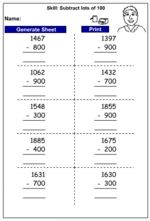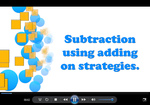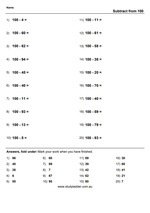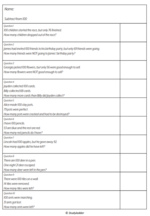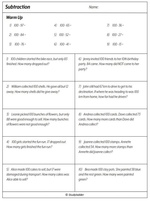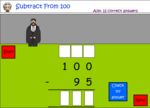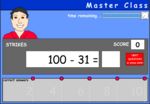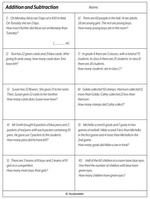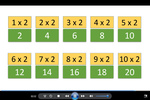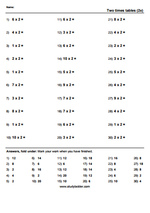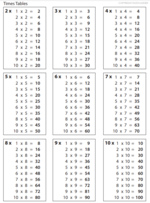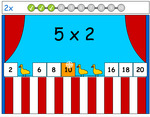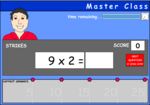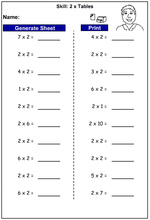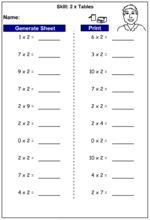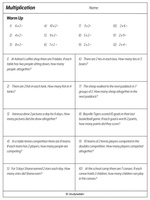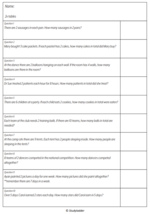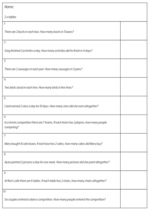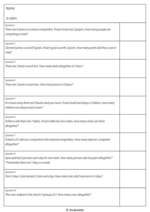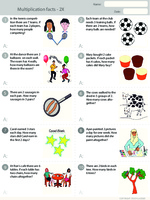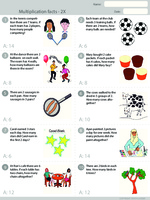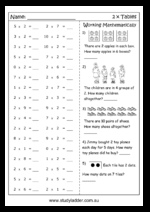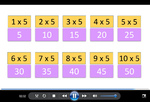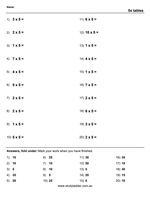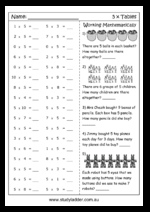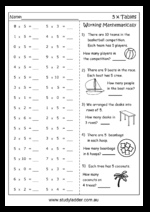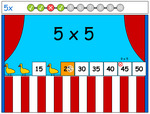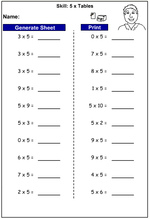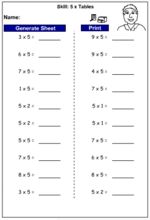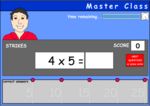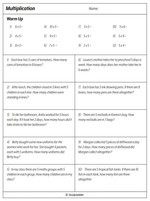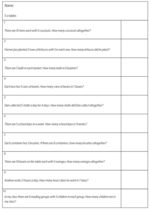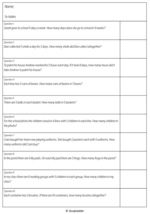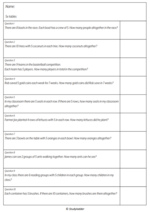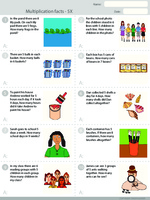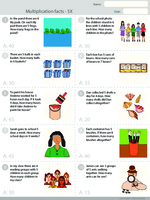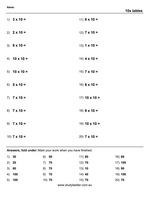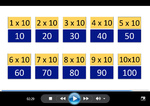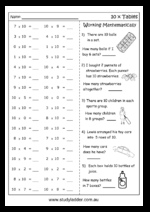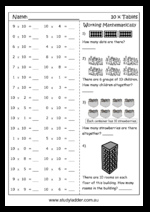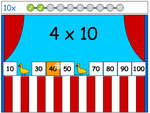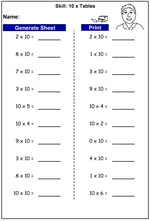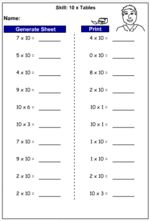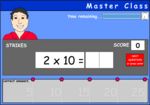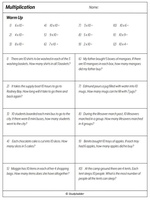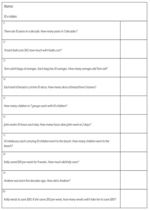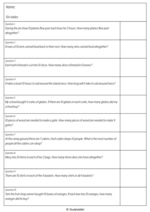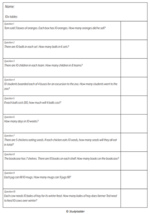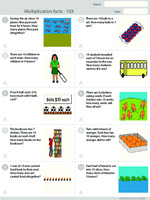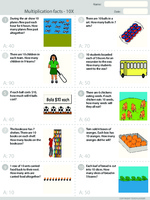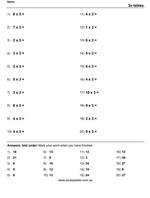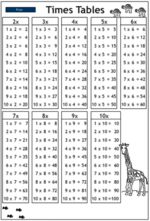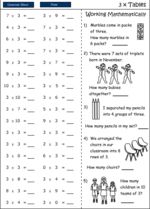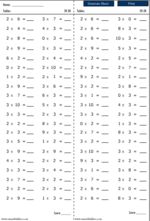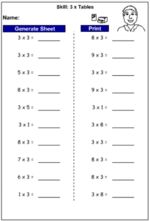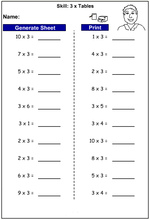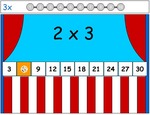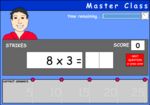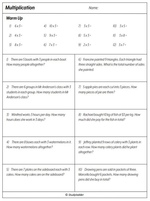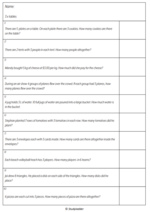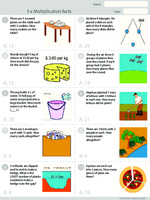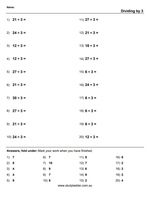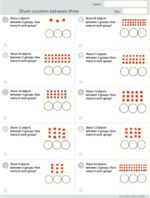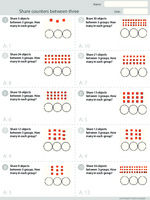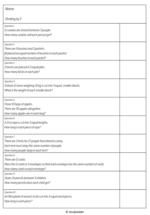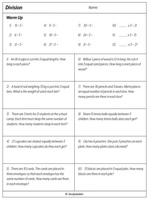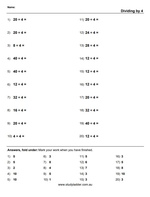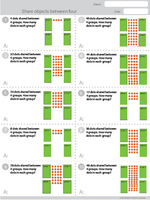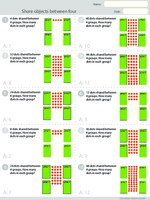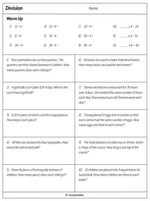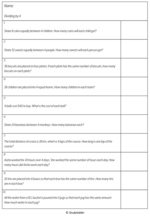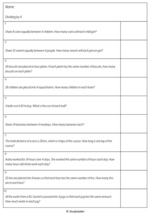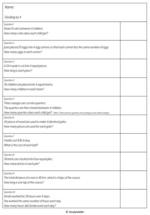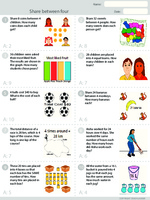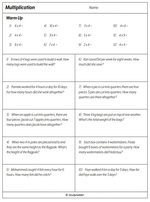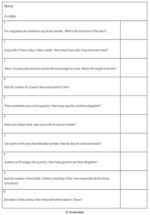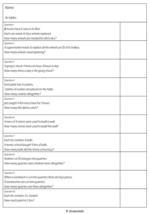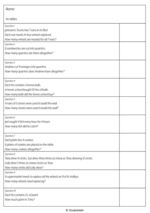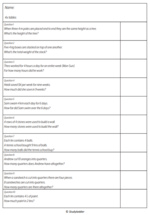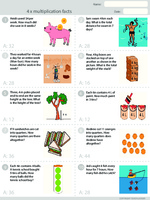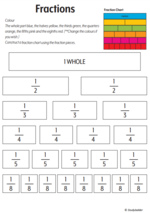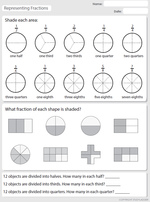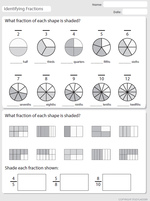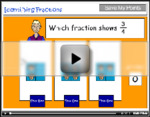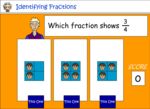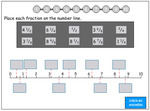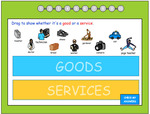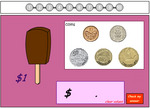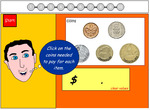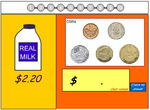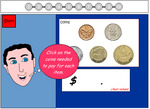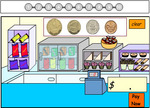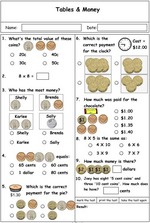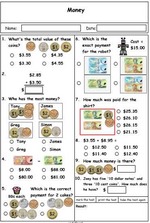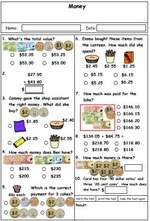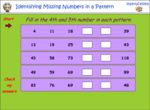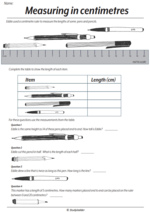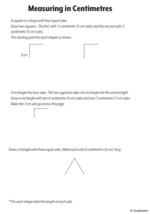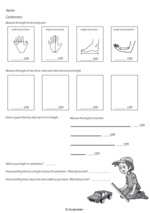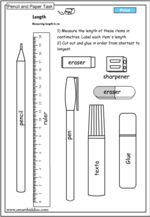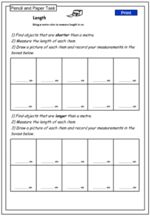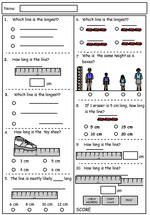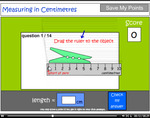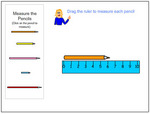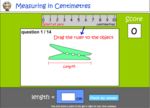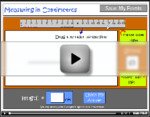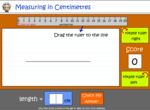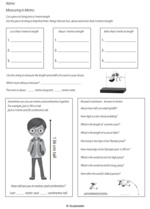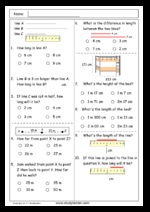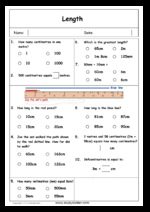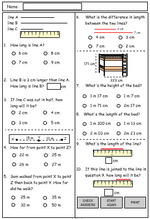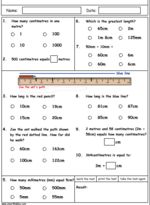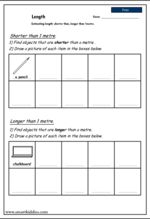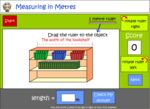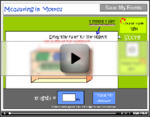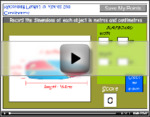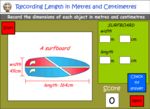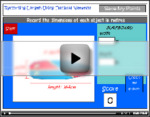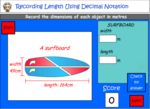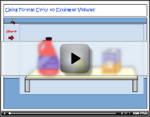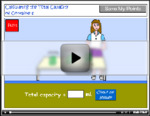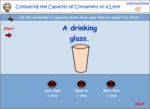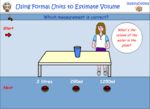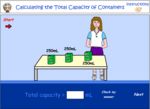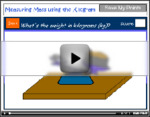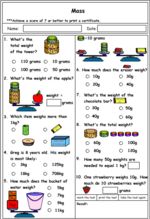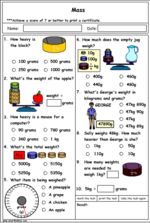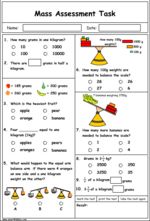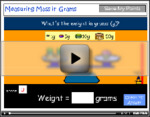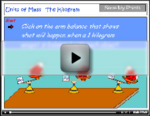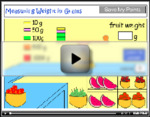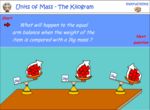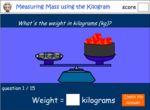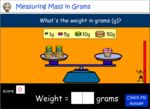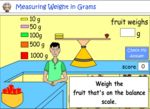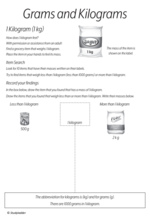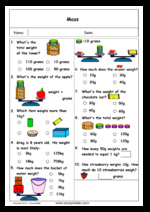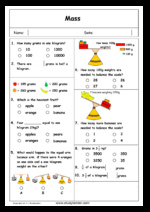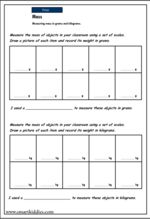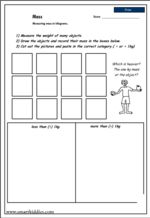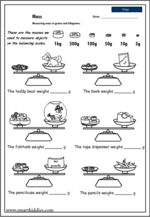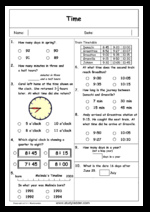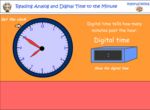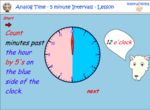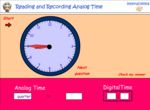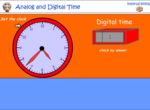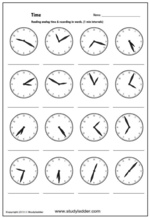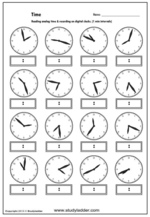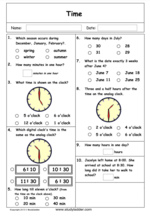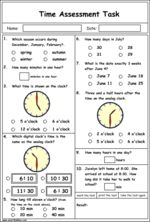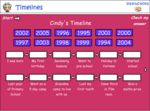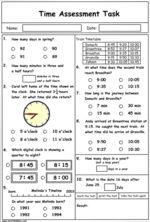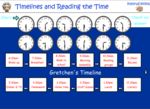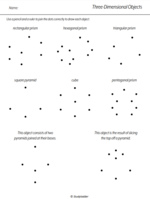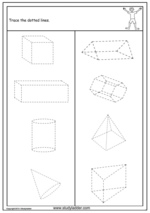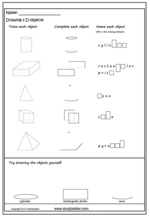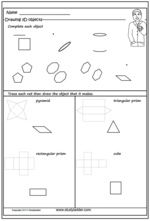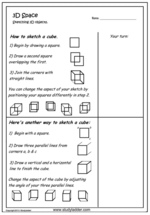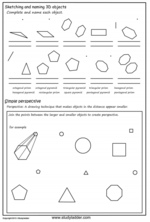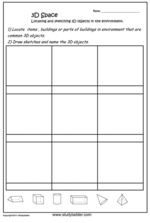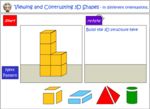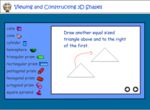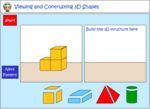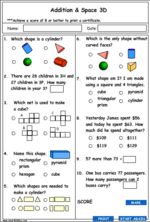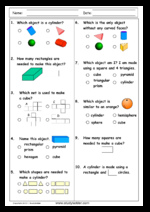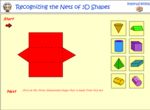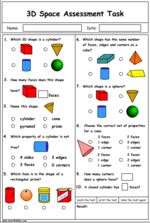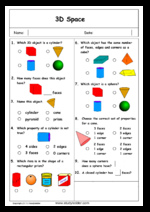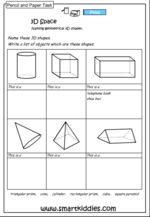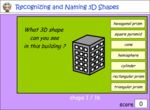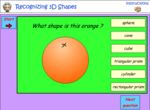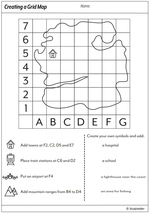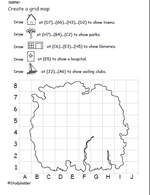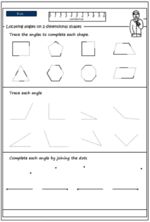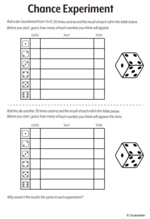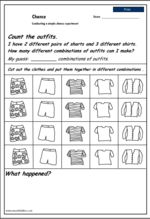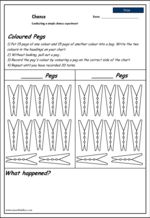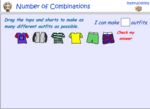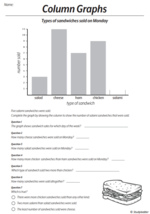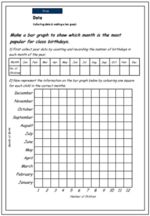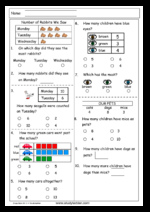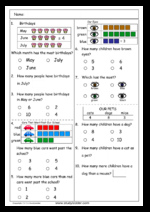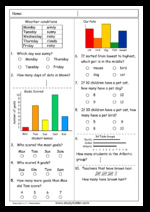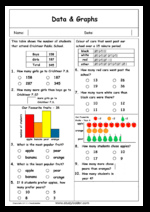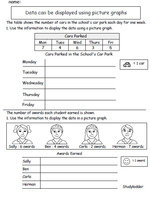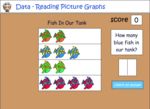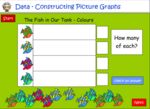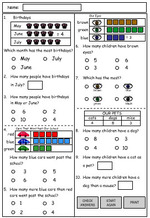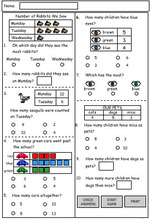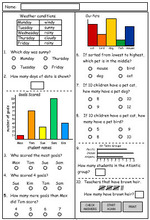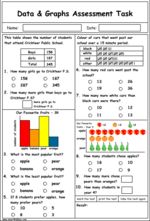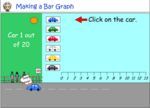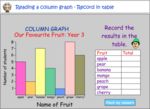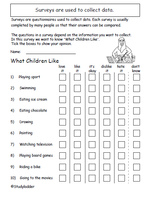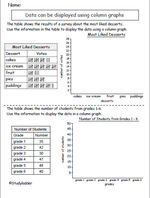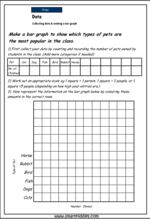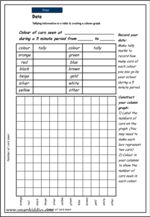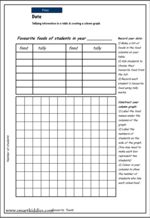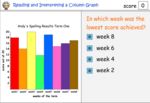Mathematics – Australia – Australian Curriculum
Number and Algebra
Number and place value
ACMNA051 – Investigate the conditions required for a number to be odd or even and identify odd and even numbers
-
4 learning outcomes – click to view
Samples: Odd or Even amounts. Even numbers to 20 - equations. Odd numbers. Challenge puzzle. Even numbers. Even or odd.
-
Odd or Even amounts
- Activities: 1 course, 0 extra
-
Choosing the correct equation
- Activities: 1 course, 0 extra
-
Odd and even numbers
- Activities: 3 course, 2 extra
-
Challenge puzzle - Odd and Even Numbers
- Activities: 1 course, 0 extra
-
-
4 learning outcomes – click to view
ACMNA052 – Recognise, model, represent and order numbers to at least 10 000
-
3 learning outcomes – click to view
Samples: Reading numbers to 10,000. Writing numbers to 10,000. Great than or Less than. Writing numbers to 10,000.
-
Reading numbers to 10,000
- Activities: 1 course, 0 extra
-
Writing numbers to 10,000
- Activities: 2 course, 0 extra
-
Comparing numbers to 10,000 (<,=,>)
- Activities: 1 course, 0 extra
-
-
3 learning outcomes – click to view
ACMNA053 – Apply place value to partition, rearrange and regroup numbers to at least 10 000 to assist calculations and solve problems
-
5 learning outcomes – click to view
Samples: Place value - thousands, hundreds, tens and ones. Expanded Notation Part 1. Expanded notation (to 10,000).
-
Place value - thousands, hundreds, tens and ones
- Activities: 7 course, 12 extra
-
Place value of a digit
- Activities: 3 course, 1 extra
-
Expanded notation (to 10,000)
- Activities: 4 course, 5 extra
-
-
5 learning outcomes – click to view
ACMNA054 – Recognise and explain the connection between addition and subtraction
-
6 learning outcomes – click to view
Samples: Place value - adding on ones. Place value - adding two-digit numbers. Adding three digit numbers using blocks.
-
Place value - adding on ones
- Activities: 1 course, 0 extra
-
Place value - adding two-digit numbers
- Activities: 2 course, 1 extra
-
Place value - adding three-digit numbers
- Activities: 2 course, 0 extra
-
Place value - subtracting three-digit numbers
- Activities: 1 course, 0 extra
-
-
6 learning outcomes – click to view
ACMNA055 – Recall addition facts for single-digit numbers and related subtraction facts to develop increasingly efficient mental strategies for computation
-
73 learning outcomes – click to view
Samples: Adding three numbers (problem solving). Adding three numbers (small numbers). Adding three single digit numbers.
-
Adding three numbers (problem solving)
- Activities: 2 course, 2 extra
-
Adding three small numbers
- Activities: 2 course, 10 extra
-
Adding three numbers
- Activities: 7 course, 4 extra
-
Adding single digit numbers - matching answers
- Activities: 4 course, 1 extra
-
Adding-on 100
- Activities: 3 course, 1 extra
-
Adding multiples of 10
- Activities: 3 course, 4 extra
-
Adding two-digit numbers by rounding then estimating
- Activities: 1 course, 2 extra
-
Adding single-digit numbers to two-digit numbers
- Activities: 3 course, 14 extra
-
Adding-on 10
- Activities: 3 course, 4 extra
-
Adding-on 20
- Activities: 3 course, 3 extra
-
Adding-on 30
- Activities: 2 course, 3 extra
-
Adding-on 40
- Activities: 2 course, 2 extra
-
Adding-on 50
- Activities: 2 course, 3 extra
-
Adding multiples of 10
- Activities: 1 course, 3 extra
-
Adding-on multiples of 100
- Activities: 1 course, 3 extra
-
Adding two-digit numbers using the split strategy
- Activities: 6 course, 2 extra
-
Adding two-digit numbers using the jump strategy
- Activities: 6 course, 5 extra
-
Adding two-digit numbers using the written strategy
- Activities: 5 course, 11 extra
-
Adding two digit numbers (look for 10)
- Activities: 2 course, 0 extra
-
Adding two digit numbers
- Activities: 2 course, 1 extra
-
Adding two digit numbers - problem solving
- Activities: 6 course, 12 extra
-
Challenge Puzzle - Addition Pyramid
- Activities: 1 course, 0 extra
-
Single Digit Subtraction Match
- Activities: 1 course, 0 extra
-
Subtracting 10
- Activities: 8 course, 12 extra
-
Subtracting 10 from larger numbers
- Activities: 1 course, 1 extra
-
Subtraction and addition (problem solving)
- Activities: 1 course, 1 extra
-
Subtracting 20
- Activities: 4 course, 5 extra
-
Subtracting 30
- Activities: 3 course, 3 extra
-
Subtracting 30 (problem solving)
- Activities: 0 course, 1 extra
-
Subtracting 40
- Activities: 2 course, 3 extra
-
Subtracting 40 (problem solving)
- Activities: 0 course, 1 extra
-
Subtracting 50
- Activities: 2 course, 4 extra
-
Subtracting multiples of 10
- Activities: 4 course, 7 extra
-
Subtracting 100 from larger numbers
- Activities: 1 course, 1 extra
-
Subtracting multiples of 100 from larger numbers
- Activities: 2 course, 3 extra
-
Subtracting from 100
- Activities: 6 course, 7 extra
-
Subtraction (two step problem solving)
- Activities: 2 course, 1 extra
-
Mentals 1
- Activities: 1 course, 0 extra
-
Mentals 2
- Activities: 1 course, 0 extra
-
Mentals 3
- Activities: 1 course, 0 extra
-
Mentals 4
- Activities: 1 course, 0 extra
-
Mentals 5
- Activities: 1 course, 0 extra
-
Mentals 6
- Activities: 1 course, 0 extra
-
Mentals 7
- Activities: 1 course, 0 extra
-
Mentals 8
- Activities: 1 course, 0 extra
-
Mentals 9
- Activities: 1 course, 0 extra
-
Mentals 10
- Activities: 1 course, 0 extra
-
Mentals 11
- Activities: 1 course, 0 extra
-
Mentals 12
- Activities: 1 course, 0 extra
-
Mentals 13
- Activities: 1 course, 0 extra
-
Mentals 14
- Activities: 1 course, 0 extra
-
Mentals 15
- Activities: 1 course, 0 extra
-
Mentals 16
- Activities: 1 course, 0 extra
-
Mentals 17
- Activities: 1 course, 0 extra
-
Mentals 18
- Activities: 1 course, 0 extra
-
Mentals 19
- Activities: 1 course, 0 extra
-
Mentals 20
- Activities: 1 course, 0 extra
-
Mentals 21
- Activities: 1 course, 1 extra
-
Mentals 22
- Activities: 1 course, 0 extra
-
Mentals 23
- Activities: 1 course, 0 extra
-
Mentals 24
- Activities: 1 course, 0 extra
-
Mentals 25
- Activities: 1 course, 0 extra
-
Mentals 26
- Activities: 1 course, 0 extra
-
Mentals 27
- Activities: 1 course, 0 extra
-
Mentals 28
- Activities: 1 course, 0 extra
-
Mentals 29
- Activities: 1 course, 0 extra
-
Mentals 30
- Activities: 1 course, 0 extra
-
Mentals 31
- Activities: 1 course, 0 extra
-
Mentals 32
- Activities: 1 course, 0 extra
-
Mentals 33
- Activities: 1 course, 0 extra
-
Mentals 34
- Activities: 1 course, 0 extra
-
Mentals 35
- Activities: 1 course, 0 extra
-
Mentals 36
- Activities: 1 course, 0 extra
-
-
73 learning outcomes – click to view
ACMNA056 – Recall multiplication facts of two, three, five and ten and related division facts
-
14 learning outcomes – click to view
Samples: Groups of 2. 2x tables (problem solving). 2x Multiplication facts (times tables) - puzzle. Groups of 5.
-
2x tables
- Activities: 12 course, 6 extra
-
2x tables (problem solving)
- Activities: 2 course, 7 extra
-
2x Multiplication facts (times tables) - puzzle
- Activities: 1 course, 0 extra
-
5x tables
- Activities: 9 course, 7 extra
-
5x tables (problem solving)
- Activities: 2 course, 6 extra
-
10x tables
- Activities: 9 course, 6 extra
-
10x tables (problem solving)
- Activities: 2 course, 6 extra
-
3x tables
- Activities: 8 course, 8 extra
-
3x tables (problem solving)
- Activities: 3 course, 3 extra
-
Puzzle - 3x tables
- Activities: 1 course, 0 extra
-
Dividing by 3
- Activities: 4 course, 3 extra
-
Dividing by 3 (problem solving)
- Activities: 2 course, 2 extra
-
Dividing by 4
- Activities: 4 course, 3 extra
-
Dividing by 4 (problem solving)
- Activities: 2 course, 5 extra
-
-
14 learning outcomes – click to view
ACMNA057 – Represent and solve problems involving multiplication using efficient mental and written strategies and appropriate digital technologies
-
8 learning outcomes – click to view
Samples: 3x tables (problem solving). Challenge Puzzle - 3x tables. 4x tables (problem solving).
-
3x tables (problem solving)
- Activities: 3 course, 3 extra
-
Puzzle - 3x tables
- Activities: 1 course, 0 extra
-
4x tables (problem solving)
- Activities: 3 course, 6 extra
-
4x tables - puzzle
- Activities: 1 course, 0 extra
-
2x tables (problem solving)
- Activities: 2 course, 7 extra
-
2x Multiplication facts (times tables) - puzzle
- Activities: 1 course, 0 extra
-
5x tables (problem solving)
- Activities: 2 course, 6 extra
-
10x tables (problem solving)
- Activities: 2 course, 6 extra
-
-
8 learning outcomes – click to view
Fractions and decimals
ACMNA058 – Model and represent unit fractions including 1/2, 1/4, 1/3, 1/5 and their multiples to a complete whole
-
4 learning outcomes – click to view
Samples: Representing fractions. Writing fractions. Fractions on a number line. Equivalent Fractions. Identifying fractions.
-
Fractions (problem solving)
- Activities: 1 course, 0 extra
-
Identifying fractions
- Activities: 6 course, 4 extra
-
Fractions on a number line.
- Activities: 4 course, 1 extra
-
Equivalent fractions - fraction models
- Activities: 2 course, 0 extra
-
-
4 learning outcomes – click to view
Money and financial mathematics
ACMNA059 – Represent money values in multiple ways and count the change required for simple transactions to the nearest five cents
-
9 learning outcomes – click to view
Samples: Earning Pocket Money. Saving Money. Identifying goods and services. Making equal amounts.
-
Earning Pocket Money
- Activities: 1 course, 1 extra
-
Saving money
- Activities: 1 course, 1 extra
-
Good and Services
- Activities: 2 course, 1 extra
-
Making equal amounts
- Activities: 1 course, 0 extra
-
Comparing and counting notes and coins
- Activities: 1 course, 0 extra
-
Paying for goods and services
- Activities: 1 course, 3 extra
-
Represent money in multiple ways
- Activities: 1 course, 0 extra
-
Paying for goods and calculating totals
- Activities: 1 course, 6 extra
-
Price variation
- Activities: 1 course, 0 extra
-
-
9 learning outcomes – click to view
Patterns and algebra
ACMNA060 – Describe, continue, and create number patterns resulting from performing addition or subtraction
-
3 learning outcomes – click to view
Samples: Number patterns - Identifying the rule. Continue number patterns. Shapes Algebra.
-
Number patterns - Identifying the rule
- Activities: 2 course, 0 extra
-
Continue number patterns resulting from addition or subtraction
- Activities: 1 course, 1 extra
-
Shapes Algebra
- Activities: 2 course, 0 extra
-
-
3 learning outcomes – click to view
Measurement and Geometry
Using units of measurement
ACMMG061 – Measure, order and compare objects using familiar metric units of length, mass and capacity
-
12 learning outcomes – click to view
Samples: Measuring in Centimetres. Measuring in centimeters. Problem solving. Length. Measuring in metres. Millilitres Litres.
-
Measure length in centimetres
- Activities: 9 course, 6 extra
-
Measure length in centimeters
- Activities: 1 course, 3 extra
-
Length - problem solving
- Activities: 1 course, 0 extra
-
Measure length in metres
- Activities: 4 course, 12 extra
-
Measure volume using litres and milliltres
- Activities: 1 course, 6 extra
-
Reading measuring devices
- Activities: 3 course, 0 extra
-
Volume (problem solving)
- Activities: 1 course, 0 extra
-
Measure mass in grams and kilograms
- Activities: 1 course, 13 extra
-
Grams and Kilograms
- Activities: 9 course, 6 extra
-
Measure mass using balance scales
- Activities: 1 course, 0 extra
-
Mass (problem solving)
- Activities: 1 course, 0 extra
-
-
12 learning outcomes – click to view
ACMMG062 – Tell time to the minute and investigate the relationship between units of time
-
4 learning outcomes – click to view
Samples: Reading digital time. Time (problem solving). Telling the time. Timelines. Counting by 5's on a clock face. Time.
-
Reading time - five minute intervals
- Activities: 8 course, 2 extra
-
Time (problem solving)
- Activities: 1 course, 1 extra
-
Reading Time - to the minute
- Activities: 4 course, 11 extra
-
Timelines
- Activities: 1 course, 5 extra
-
-
4 learning outcomes – click to view
Shape
ACMMG063 – Make models of three-dimensional objects and describe key features
-
3 learning outcomes – click to view
Samples: Drawing 3D objects. Matching - three-dimensional objects with their nets. Naming three-dimensional objects.
-
Drawing three-dimensional objects
- Activities: 11 course, 9 extra
-
Nets of three dimensional objects
- Activities: 4 course, 4 extra
-
Naming three-dimensional objects
- Activities: 6 course, 6 extra
-
-
3 learning outcomes – click to view
Location and transformation
ACMMG065 – Create and interpret simple grid maps to show position and pathways
-
2 learning outcomes – click to view
Samples: Coordinates. Interpret a basic map - island. The map key. Interpret a basic map - using a key.
-
Simple maps and coordinates
- Activities: 3 course, 0 extra
-
Basic maps
- Activities: 2 course, 4 extra
-
-
2 learning outcomes – click to view
ACMMG066 – Identify symmetry in the environment
-
1 learning outcomes – click to view
Samples: Symmetry in the environment.
-
Symmetry - man-made structures
- Activities: 0 course, 1 extra
-
-
1 learning outcomes – click to view
Geometric reasoning
ACMMG064 – Identify angles as measures of turn and compare angle sizes in everyday situations
-
1 learning outcomes – click to view
Samples: Comparing angles. Angles in the environment. Drawing angles.
-
Comparing angles
- Activities: 2 course, 1 extra
-
-
1 learning outcomes – click to view
Statistics and Probability
Chance
ACMSP067 – Conduct chance experiments, identify and describe possible outcomes and recognise variation in results
-
2 learning outcomes – click to view
Samples: Chance experiments. Identifying the number of combinations. Chance experiment.
-
Recognise variation in results of chance experiments.
- Activities: 2 course, 2 extra
-
Number of combinations
- Activities: 0 course, 2 extra
-
-
2 learning outcomes – click to view
Data representation and interpretation
ACMSP068 – Identify questions or issues for categorical variables. Identify data sources and plan methods of data collection and recording
-
5 learning outcomes – click to view
Samples: Column graphs. Data - picture graphs. Data. Surveys to collect data. Interpreting column graphs. Column graphs.
-
Column graphs
- Activities: 4 course, 6 extra
-
Interpret data presented using picture graphs.
- Activities: 2 course, 4 extra
-
Interpret data presented using simple column graphs
- Activities: 0 course, 6 extra
-
Use surveys to collect data
- Activities: 1 course, 0 extra
-
Interpret data using column graphs
- Activities: 3 course, 5 extra
-
-
5 learning outcomes – click to view
ACMSP069 – Collect data, organise into categories and create displays using lists, tables, picture graphs and simple column graphs, with and without the use of digital technologies
-
5 learning outcomes – click to view
Samples: Column graphs. Data - picture graphs. Data. Surveys to collect data. Interpreting column graphs. Column graphs.
-
Column graphs
- Activities: 4 course, 6 extra
-
Interpret data presented using picture graphs.
- Activities: 2 course, 4 extra
-
Interpret data presented using simple column graphs
- Activities: 0 course, 6 extra
-
Use surveys to collect data
- Activities: 1 course, 0 extra
-
Interpret data using column graphs
- Activities: 3 course, 5 extra
-
-
5 learning outcomes – click to view
ACMSP070 – Interpret and compare data displays
-
5 learning outcomes – click to view
Samples: Column graphs. Data - picture graphs. Data. Surveys to collect data. Interpreting column graphs. Column graphs.
-
Column graphs
- Activities: 4 course, 6 extra
-
Interpret data presented using picture graphs.
- Activities: 2 course, 4 extra
-
Interpret data presented using simple column graphs
- Activities: 0 course, 6 extra
-
Use surveys to collect data
- Activities: 1 course, 0 extra
-
Interpret data using column graphs
- Activities: 3 course, 5 extra
-
-
5 learning outcomes – click to view





